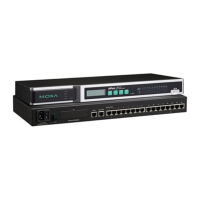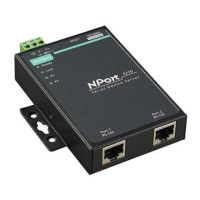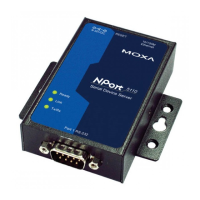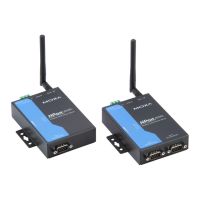• Delimiter + 1: Data in the buffer will be transmitted after 1 additional byte is received following the
delimiter.
• Delimiter + 2: Data in the buffer will be transmitted after 2 additional bytes are received following the
delimiter.
• Strip Delimiter: Data in the buffer is first stripped of the delimiter before being transmitted.
Force transmit (default=0 ms): This parameter defines how large a gap in serial communication the CN2600
will allow before packing the serial data in its internal buffer for network transmission.
As data is received through the serial port, it is stored by the CN2600 in the internal buffer. The CN2600
transmits data stored in the buffer via TCP/IP, but only when the internal buffer is full or as specified by the
force transmit time. When set to 0, the force transmit time is disabled, and transmission is determined solely
by the data in the internal buffer. At 1 to 65535, the TCP/IP protocol software will pack the serial data received
after there is a gap in serial communication that exceeds the specified force transmit time.
The optimal force transmit time depends on your application, but it must be at least larger than one character
interval within the specified baudrate. For example, assume that the serial port is set to 1200 bps, 8 data bits,
1 stop bit, and no parity. In this case, the total number of bits needed to send a character is 10 bits, and the
time required to transfer one character is
(10 (bits) / 1200 (bits/s)) × 1000 (ms/s) = 8.3 ms.
Therefore, you should set the force transmit time to be larger than 8.3 ms, so in this case, it must be greater
than or equal to 10 ms.
If it is necessary to send a series of characters in the same packet, the serial device will need to send that series
of characters within the specified force transmit time, and the total length of data must be less than or equal
to the CN2600’s internal buffer size (1 KB per port).
TCP Client Mode
TCP alive check time (default=7 min): This field specifies how long the CN2600 will wait for a response to
“keep alive” packets before closing the TCP connection. The CN2600 checks connection status by sending
periodic “keep alive” packets. If the remote host does not respond to the packet within the time specified in this
field, the CN2600 will force the existing TCP connection to close. For socket and device control modes, the
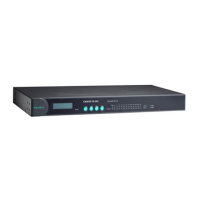
